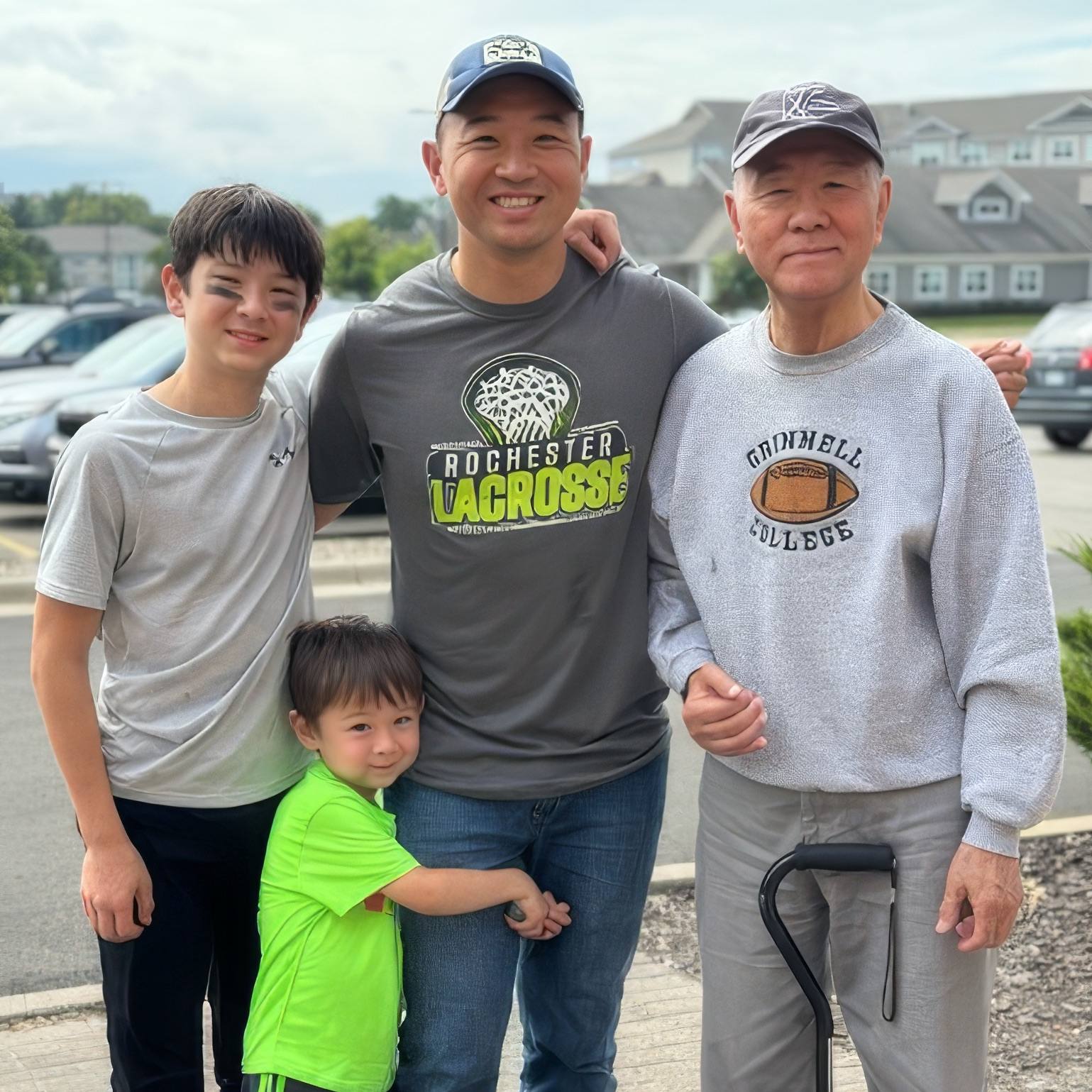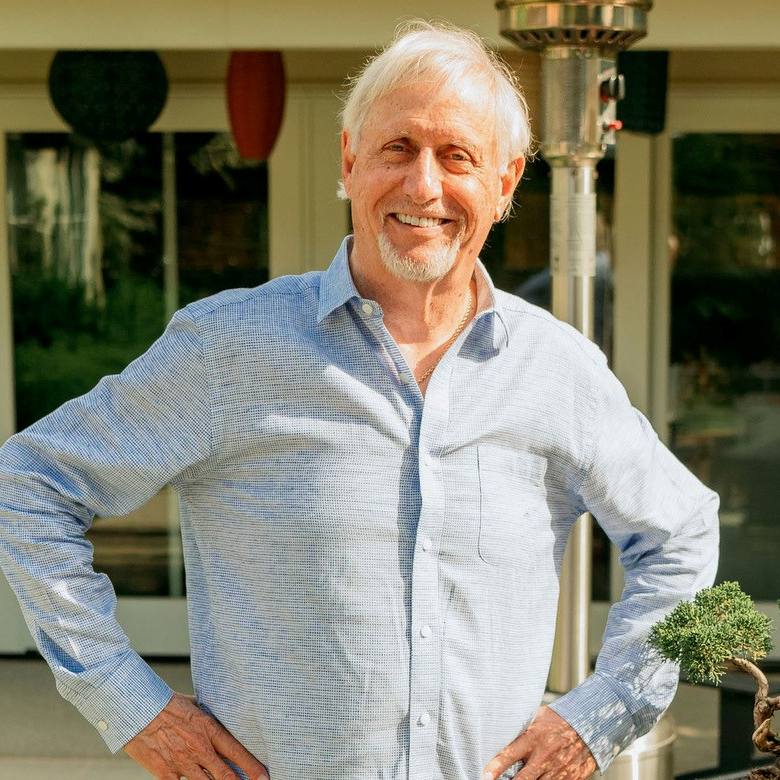-
After Treatment for Chronic Pelvic Pain, Marah’s Future is Wide Open

These days, Marah Johnson feels terrific. Happy and healthy, the 20-year-old is living her best life. It's a new reality for Marah, who had been incapacitated by unexplained pelvic pain until she met a Mayo Clinic physician who demystified her pain and provided a cure.
As a 20-year-old, Marah Johnson should have been embracing a life filled with possibility. Instead, she was bracing herself for a life of agony. Two years earlier, the young woman from Mesa, Arizona, developed pelvic pain akin to menstrual cramps that never went away. With each passing month, the pain increased until it reached a point that Marah couldn't get out of bed without help.
"I was in and out the hospital for months just from the pain," Marah says. "I went to doctor after doctor after doctor, and got referral after referral after referral, but no one knew what was wrong. I truly did not know what to do with myself. I did not know how to live."
While some of the Marah's doctors assigned her tentative diagnoses, others doubted whether her symptoms were real. "It got to the point where doctors thought I was a drug seeker and all I wanted was the pain meds," she says.
Struggling to move, unable to work and questioning her sanity, Marah finally received a referral to a gynecologist at Mayo Clinic who recognized Marah's symptoms as very real and suggested she visit pelvic pain specialist Grace Knuttinen, M.D., Ph.D., in Interventional Radiology at Mayo Clinic in Arizona.
"My first appointment with Dr. Knuttinen was pretty scary. It was just me venting and telling her how my life had been," Marah says. "Honestly, I broke down and fell apart. But she consoled me and almost became a second mom to me. She made sure I knew everything was going to be OK and that she could fix this."
Under Dr. Knuttinen's care, Marah's pain was identified as a symptom of pelvic venous compression syndrome — a disorder in which blood flow is obstructed as it moves through the pelvis. In April, Marah underwent a stenting procedure to open the vein in her pelvis that had nearly been pinched shut.
A few weeks later, Marah was out of bed and active again. "My life has changed so much," she says. "I can go a full day at work and not be in pain. I have my life back."
Finding a path forward after being lost in pain
Pelvic venous compression syndrome can happen at any age. But when it occurs in younger people, the stakes are higher for proper diagnosis and appropriate treatment, Dr. Knuttinen says.
"It hurt my heart to see Marah like she was," Dr. Knuttinen says. "She has a whole life ahead of her and to be in this endless cycle of really having true symptoms, true pain, and someone saying, 'It's in your head,' makes it hard. It causes patients to question themselves and an endless circle of anxiety and depression. Marah's quality of life was just not what it should be for a young 20-year-old who has a long life to live."
For Marah, the worst part of the experience was losing herself to pain and uncertainty just after becoming an adult. "As a person, I didn't know how to handle myself anymore," she says.
Not only had her condition made her situation untenable, it also destroyed dreams of her future. "I did have an OB-GYN who told me I wouldn't be able to have kids," Marah says. "That was really hard to deal with, being only a 19-year-old who wants nothing more than to have a family. So I dealt with that for a few months without finding the truth."
The truth in Marah's case was not easy to come by. Dr. Knuttinen began her investigation into Marah's malady by talking to the other specialists who initially saw Marah, and then having a direct and pointed discussion with Marah to tease out the details of her symptoms.
"Having directed personal conversations with these patients is so important," Dr. Knuttinen says. "You really have to focus on the symptoms that are specific to each of these people. And it's a really sensitive topic. Women sometimes do not like to talk in detail about their pelvic and vaginal issues. The conversations can be very difficult and sometimes hard for patients to freely engage in. That's even truer when you have a younger patient."
"I'd never heard of (this disorder), and I was really baffled that I got diagnosed with it. It was scary. But honestly, I was just more grateful that anything."
Marah Johnson
Learning that Marah experienced symptoms such as pelvic swelling, fatigue, pain flares and abnormal bleeding helped hone in on a diagnosis of pelvic venous insufficiency, which is an increase in pelvic venous pooling. That led Dr. Knuttinen to recommend cross-sectional imaging for Marah. The results revealed Marah had pelvic venous compression, also called May-Thurner. After that, Marah underwent another test — a pelvic venogram — to determine the extent of the blood flow obstruction.
In patients with this disorder, symptoms are caused by compression of the left common iliac vein. The compression occurs at the point in the pelvis where the right common iliac artery crosses over the left common iliac vein — the vein that brings blood from the left leg and pelvis to the heart. The vein becomes compressed between the spine and the artery, and blood flow is obstructed as a result. A pelvic venogram, which involves injecting X-ray contrast dye into the pelvic veins to view blood flow patterns, highlights the extent and severity of the compression. In Marah's case, her left common iliac vein was severely compressed, with about 90% of the blood flow obstructed.
Learning about her condition and its severity was a complicated, emotional experience for Marah. "I'd never heard of it, and I was really baffled that I got diagnosed with it," she says. "It was scary. But honestly, I was just more grateful that anything."
Individualized care unlocks a new approach to life
A short time after the venogram, Marah underwent the stenting procedure to fix the problem. That procedure involves inserting a catheter through the groin into the left common femoral vein, and then advancing it to the site of compression under X-ray guidance. Next, intravascular ultrasound, which captures images taken from a camera inside the vein, is performed to show the severity and length of the compression. That helps determine the size of the stent needed to open it and the precise location the stent should be placed. Once inserted, the stent opens the vein and allows blood to flow freely in the right direction.
The first few days after the procedure were hard, mainly because the back pain Marah experienced was largely unaffected by pain medications. The pain was different than the previous abdominal and pelvic pain, though. "Marah did amazingly well. She is one tough cookie," Dr. Knuttinen says.
Two weeks after the stenting procedure, Marah's pain began diminishing, and she started moving back into her life. "A few weeks after the procedure, I was already quadding (driving four-wheeled all-terrain vehicles) and back to having day-to-day activity," Marah says. "Now I can do anything and everything."
"Everyone (at Mayo Clinic) is very genuine and cares for you. That makes a big difference."
Marah Johnson
As Marah has reclaimed her life, she also reimagined her future — one that looks vastly different than it did a year ago. "Being told that I was never going to have a family or get pregnant, it really crushed me. It crushed my world," Marah says. "After going through the procedure, that is the first thing I want to be able to do now that I can."
Regaining the confidence and physical ability to pursue her dreams would have been impossible without the support of her Mayo Clinic team, Marah adds. "At Mayo, I showed up, and they were like: 'What can I do for you? How can I help you?' That was a big part of it," she says. "It was very comforting. They almost give you that at-home warmth. Everyone is very genuine and cares for you. That makes a big difference."
The change in Marah's disposition and outlook since her procedure is evident to all who know her. "She is doing amazing. She is a completely different person from when I first saw her," Dr. Knuttinen says. "She went from many days and years of suffering to becoming the brilliant young lady that she is today. She is currently working, and wanting to get married and have a family. The world is at her feet right now."
HELPFUL LINKS
- Learn more about chronic pelvic pain.
- Check out the Department of Radiology.
- Explore Mayo Clinic.
- Request an appointment.







